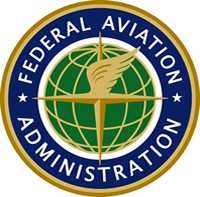But Final Staffing Levels Won't Be Known Until 2008
In its Performance and Accountability Report to the Department
of Transportation's for fiscal year (FY) 2006, the FAA said it had
managed "moderate" progress in addressing the expected surge in air
traffic controller attrition. The Office of Inspector General
agrees with that lukewarm self-critique -- and notes the agency is
still one year away from completing its assessment of where
controllers are needed most.

"During our audit, we found that FAA has made significant
improvements by centralizing its hiring process and has made
progress in reducing the time and costs to train new controllers,
primarily through greater use of simulator training at the FAA
Training Academy and implementation of a new national database to
track OJT statistics," the OIG states in report released earlier
this month. "However, further progress is needed in several key
areas."
The OIG states the FAA is still in the process of developing
accurate facility level staffing standards, which are a foremost
necessity in effectively placing newly hired controllers where they
will be most needed. Planning by location is critical because FAA
has over 300 terminal and en route air traffic control facilities
with significant differences in the types of users they serve, the
complexity of airspace they manage, and the levels of air traffic
they handle. Without accurate facility level planning, FAA runs the
risk of placing too many or too few controllers at key
locations.
"Various groups have repeatedly expressed concerns that some FAA
air traffic facilities are either under- or over-staffed and that
replacing retiring controllers one-for-one at each location would
simply perpetuate existing staffing imbalances," the OIG states.
"FAA is aware of this concern and is in the process of validating
its staffing standard models based on data derived at the sector
and position levels in order to develop accurate staffing ranges
for all of its facilities (this process is being conducted by FAA's
contractor, MITRE Corp.).
 "FAA expects to complete this assessment for its 21 en route
centers (its largest facilities) in early 2007. However, estimated
completion for the entire project is not until the end of
2008."
"FAA expects to complete this assessment for its 21 en route
centers (its largest facilities) in early 2007. However, estimated
completion for the entire project is not until the end of
2008."
In the full 44-page report, available for download at the FMI
link below, the OIG admonishes the FAA to ensure that timetable is
met. "Given the goal of increasing controller productivity, the
lengthy training time, and significant expenditures that will be
required to hire and train new controllers over the next 10 years,
FAA needs to ensure this project remains on track."
In 2004, the FAA released "A Plan for the Future: The Federal
Aviation Administration's 10-Year Strategy for the Air Traffic
Controller Workforce, "detailed FAA's strategy for hiring
approximately 12,500 new controllers to replace those expected to
leave over the next 10 years. The 2004 Plan also outlined various
initiatives for increasing controller productivity and for
decreasing on-the-job training (OJT) time and costs.
FAA issued the first installment of the mandated annual update
to the Controller Workforce Plan on August 24, 2006 (the 2006
Update). The 2006 Update revised controller retirement projections
and staffing requirements based on actual results and changes in
air traffic forecasts since 2004. The 2006 Update also projected
hiring approximately 11,850 controllers over the next 10 years.
Additionally, FAA revised its retirement projection methodology
from the 2004 Plan.
 ANN's Daily Aero-Linx (05.06.25)
ANN's Daily Aero-Linx (05.06.25) ANN's Daily Aero-Term (05.06.25): Ultrahigh Frequency (UHF)
ANN's Daily Aero-Term (05.06.25): Ultrahigh Frequency (UHF) ANN FAQ: Q&A 101
ANN FAQ: Q&A 101 Classic Aero-TV: Virtual Reality Painting--PPG Leverages Technology for Training
Classic Aero-TV: Virtual Reality Painting--PPG Leverages Technology for Training Airborne 05.02.25: Joby Crewed Milestone, Diamond Club, Canadian Pilot Insurance
Airborne 05.02.25: Joby Crewed Milestone, Diamond Club, Canadian Pilot Insurance




